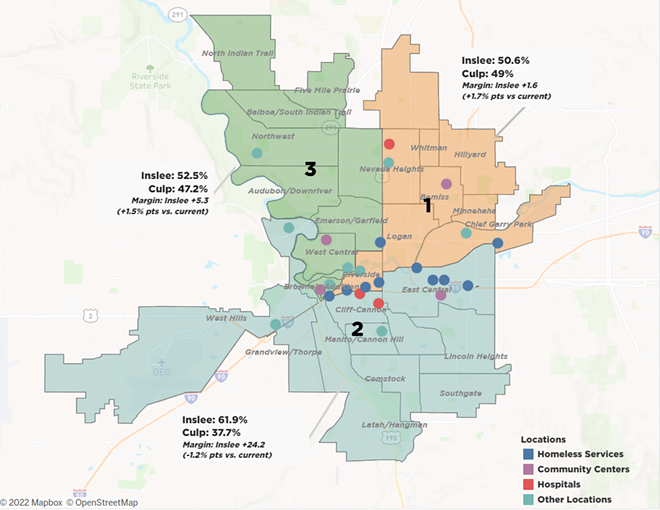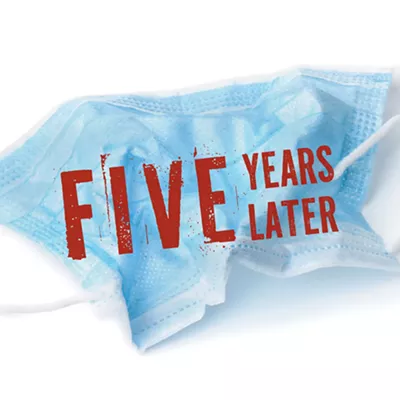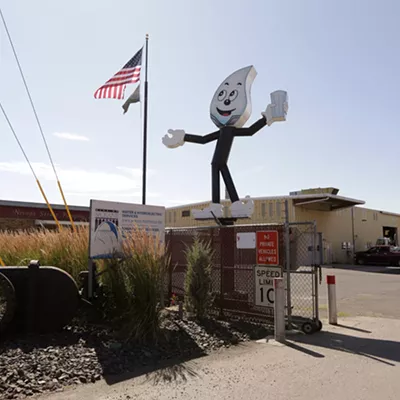
To be clear, there was always a conflict-of-interest inherent to the way the Spokane City Council redistricting's process worked.
While they farmed out the map design process to a redistricting board, the final decision to approve or reject that map was left to the City Council itself. Council members gets to choose the boundaries that can impact their own re-election prospects.
Meanwhile, the three redistricting board members had to make sacrifices to avoid the appearance of political influence. While political operatives, like the Spokane Home Builders Association's Jennifer Thomas, served on the commission, they are barred from running for office — or even donating to any candidate — for the next two years.
The board ended up unanimously — albeit grudgingly — settling on Thomas' "Map #1," a map that largely kept the boundaries the same. That's the map that the Spokane GOP has been lobbying for, yet it's also a map that doesn't help conservative candidates — it just doesn't hurt them either.
By contrast, every single member of the council on the dais Monday night knew that "Map #2" benefited progressive candidates. If the Inslee vs. Culp race would have been run under Zappone's map, Inslee would have seen a small but significant 1.5 percent bump to Council member Zack Zappone's District 2 and a 1.7 percent bump in Council member Jonathan Bingle's District 3. Even if they hadn't read the Inlander's reporting, plenty of commenters last night informed the council of that dynamic.
And every single member of council on the dais Monday night knew that "Map #2" had been designed by their colleague, Zappone. (While another member of the board also designed a nearly identical map, Zappone's map was the one that was officially forwarded as one of the four finalists.)
Yet a majority of the council voted, 4-2, for Council member Betsy Wilkerson's amendment to overwrite the committee's recommendation pick "Map #2" instead, rejecting the final recommendation of the commission. (Zappone himself abstained.)
Wilkerson, who was pushing for Map #2 back in September, argued that it didn't have anything to do with politics. Instead, she focused on the East Central neighborhood, which is currently split between South Hill progressives from District 2 and the council's two conservative members, Bingle and Michael Cathcart. On several occasions, there have been intense disagreements on the City Council about which group truly represents the will of the neighborhood.
"I hear the voices of people in the neighborhood, especially voices who are not able to be in this environment, who can't come down to City Council and spend three hours," Wilkerson says. "They have said they want to keep their neighborhood intact. They didn't say anything about being Democrat or Republican. It didn't come up."
This is the argument the progressive city council members made: City Council districts should follow neighborhood boundaries.
The neighborhood council boundaries have been decided, over the years, by the agreement of the neighborhood councils. Some of them are strange boundaries, like the West Hills neighborhood, which snakes from the airport to Spokane Falls Community College. In some cases, like with East Central, the neighborhood council president doesn't actually live within those boundaries.
Wilkerson, who grew up in the East Central Neighborhood, doesn't live there either — she lives in the Lincoln Heights neighborhood. But neighborhood council boundaries are so ill-defined in the public consciousness that both Wilkerson legislative aide Andrew Mark Carlos and the City Council spokeswoman Lisa Gardner were absolutely sure that Wilkerson lived in East Central. They'd been to her house and everything. Gardner, on behalf of Carlos, even reached out on Twitter and email to tell us the Inlander made a factual error in saying that Wilkerson didn't live in East Central. (We initially made a correction, but after further digging realized we'd been right along. Gardner and Carlos were both gracious and apologetic for the error.)
Furthermore, boundaries like I-90 are supposed to be used as dividing lines for things like neighborhoods and council districts.
But here's where it's worth noting that there's a genuinely fraught history in East Central, of a low-income neighborhood with a comparatively high black population being bisected by an interstate freeway. Wilkerson says she's very aware of the longstanding frustrations about the division in the neighborhood.
Council President Breean Beggs touched on similar themes.
"The commission is advisory," Beggs said, explaining his vote to reject the commission's conclusion. "It's our vote at the end... At the end of the day I have to decide what do I think is best for the city."
Beggs argued that having four members representing a single neighborhood meant those neighbors generally got less attention than just having two.
Cathcart strenuously disagreed, arguing that he'd heard the opposite from neighborhood leaders he'd spoken to.
"Four out of seven is a majority," Cathcart argued. "East Central is one of our strongest neighborhoods because of that. I do not want to take away that power."
In fact, the actual East Central Neighborhood Council, president Randy McGlenn writes in an email to the Inlander. "preferred the minimal changes map that was recommended" by the redistricting board, and found it ideal to have four council members representing them instead of just two.
"This gives us a bit more flexibility because many of the neighborhood meetings are stacked up on top of each other and would otherwise be very challenging for just the two council members to be at our meetings," McGlenn writes. "This way, we have had a consistent presence from City Council at most, if not all, of our meetings."
Cathcart offered a compromise: Stick with the less dramatic changes recommended by the City Council for now, and then create a working group for the next round of changes in 2025, when cities are allowed to make more sweeping changes.
The progressives on the council didn't take him up on it.
Councilwoman Karen Stratton compared the council's decision to ditch the redistricting board's recommendation to the time the public voted to put the Spokane schools sports stadium at Joe Albi instead of downtown. The Spokane Public Schools board ended up rejecting the public's recommendation and siting the stadium downtown anyway.
In a similar manner, Stratton acknowledged, she was deciding to reject the redistricting board's recommendation to vote for Map 2. That was despite listing Map 1, as one of her top two choices, instead of Zappone's. Ironically, it was after the board also recommended Map 1 that she changed her mind.
She says she understands the frustration people might feel, but argued it wasn't because of politics. It was because of feedback from the people in her district.
“I was elected to serve constituents in District 3. They don’t care who I voted for for president. They don’t care what my political leanings are. They care that their streets are cleared. And their garbage is picked up, and they know who to talk to when they have a problem,” Stratton said. “I resent all of this discussion about political parties.”''
Conservatives said they were stunned by the council's decision.
“I was up until two in the morning processing what happened last night, it blew my dang mind," Bingle told the Inlander later. He and Cathcart both voted against Zappone's map.
If a single progressive or conservative council member had broken ranks, it would be easier to believe that politics didn't play a part in their decisions.
If, say, Fuse Washington's Jim Dawson or Planned Parenthood's Paul Dillon, both outspoken progressives, had pushed for "Map #1" or if conservative former city council candidates like LaVerne Biel or Brian Burrow had pushed for "Map #2," it would be easier to believe that the lobbying efforts weren't at all politically motivated. Still, plenty of commenters on both sides of the ideological spectrum lamented the politicization the other side had brought to the table.
"I am firmly agnostic when it comes to politics," commented the Spokane Association of Realtors' government affairs director Darin Watkins, who ran as a state representative as a Republican in 2009, served as the campaign communications director for Cathy McMorris Rodgers in 2019, and donated $350 to the Spokane GOP this year. "Both sides drive me crazy."
Watkins then quoted Barack Obama on gerrymandering — twice — to oppose Zappone's map.
Two additional things: First, the city council still has to officially vote to approve the new map. They'll do that two weeks from now, offering an opportunity for another marathon City Council meeting. But considering they can't alter the map they chose without a special meeting, it's unlikely that anything would change.
It is not true that Zappone's map guarantees him a landslide or that the map is a particularly outlandish gerrymander. It's less compact than any of the other proposed maps, the populations aren't as equal, and it splits more precincts, but it's not the kind of serpentine salamanders that we've seen in the worst examples of the genre. It, theoretically, doesn't make it impossible for an extremely strong conservative opponent to beat Zappone in two years. It just makes it harder.
This article has been updated.























